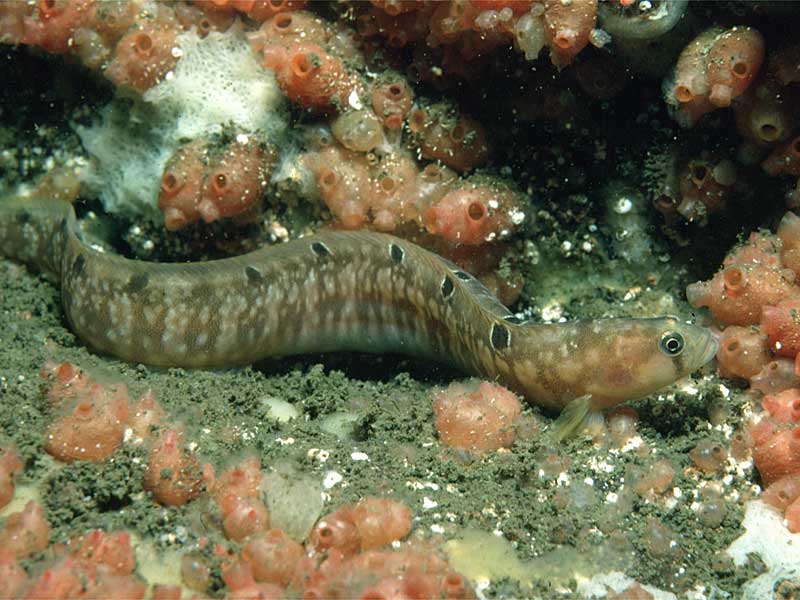| PISCES : Perciformes : Pholidae | BONY FISH |
Pholis gunnellus (Linnaeus, 1758)
Butterfish
 |
| Pholis gunnellus |
Description: The butterfish has a long, slender, eel-like body which is flattened from side to side. It has a very slippery skin and is difficult to pick up, hence its common name. The coloration is usually yellowish-brown with darker brown mottling. Like yarrell's blenny (Chirolophis ascani) there is a dark bar which runs from beneath the eye to the outer edge of the mouth. The most characteristic feature of the butterfish is a row of 9-15 black spots, each surrounded by a white ring, along the base of the dorsal fin. Adult fish are between 17-25cm in length.
Habitat: The butterfish is common beneath boulders and seaweeds on the low shore and also sublittorally in a wide range of habitats. It frequently hides amongst seaweed or in crevices in rock. It feeds mainly on small crustaceans and worms.
Distribution: This species is common and widespread all around Britain and Ireland.
Similar Species: Eels, some blennies and rocklings are a similar shape, however only the butterfish has a row of black spots surrounded by white circles at the base of the dorsal fin.
Key Identification Features:
- Long, slippery, eel-like body
- Row of black spots, each surrounded by a white circle along the base of the dorsal fin
Distribution Map from NBN: Pholis gunnellus at National Biodiversity Network mapping facility, data for UK.
iNaturalist: Pholis gunnellus at iNaturalist World Species Observations database.
GBIF data for Pholis gunnellus
WoRMS: Pholis gunnellus at World Register of Marine Species. Accepted name: Pholis gunnellus (Linnaeus, 1758). AphiaID: 126996.
Classification: Biota; Animalia; Chordata; Vertebrata; Gnathostomata; Osteichthyes; Actinopterygii; Actinopteri; Teleostei; Perciformes; Zoarcoidei; Pholidae; Pholis
| Previous species | Next species |
| Picton, B.E. & Morrow, C.C. (2024). Pholis gunnellus. (Linnaeus, 1758). [In] Encyclopedia of Marine Life of Britain and Ireland. https://www2.habitas.org.uk/marbiop-ni/speciesaccounts.php?item=ZG6800. Accessed on 2025-04-10 |